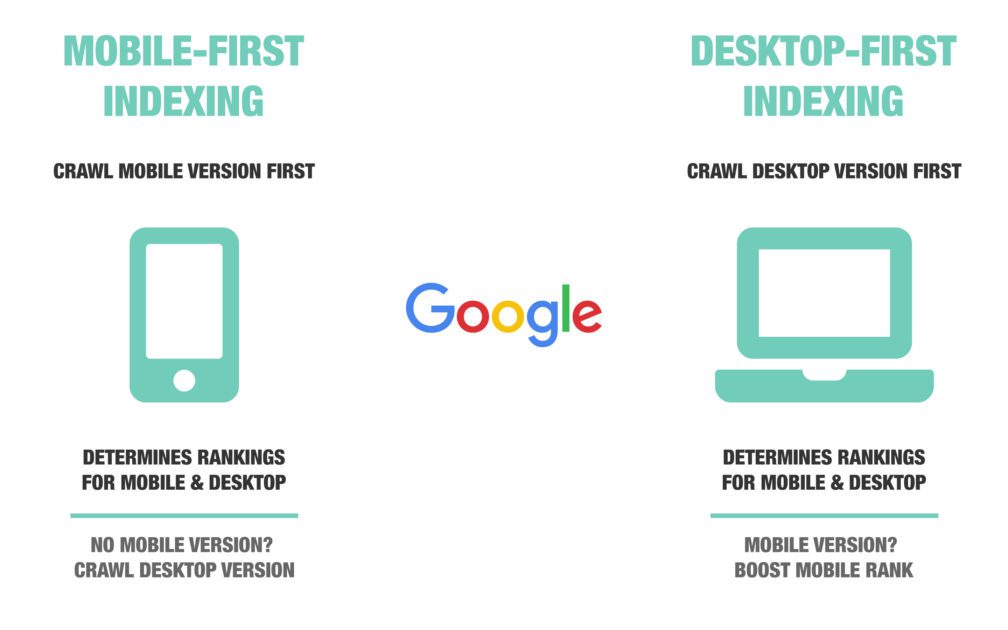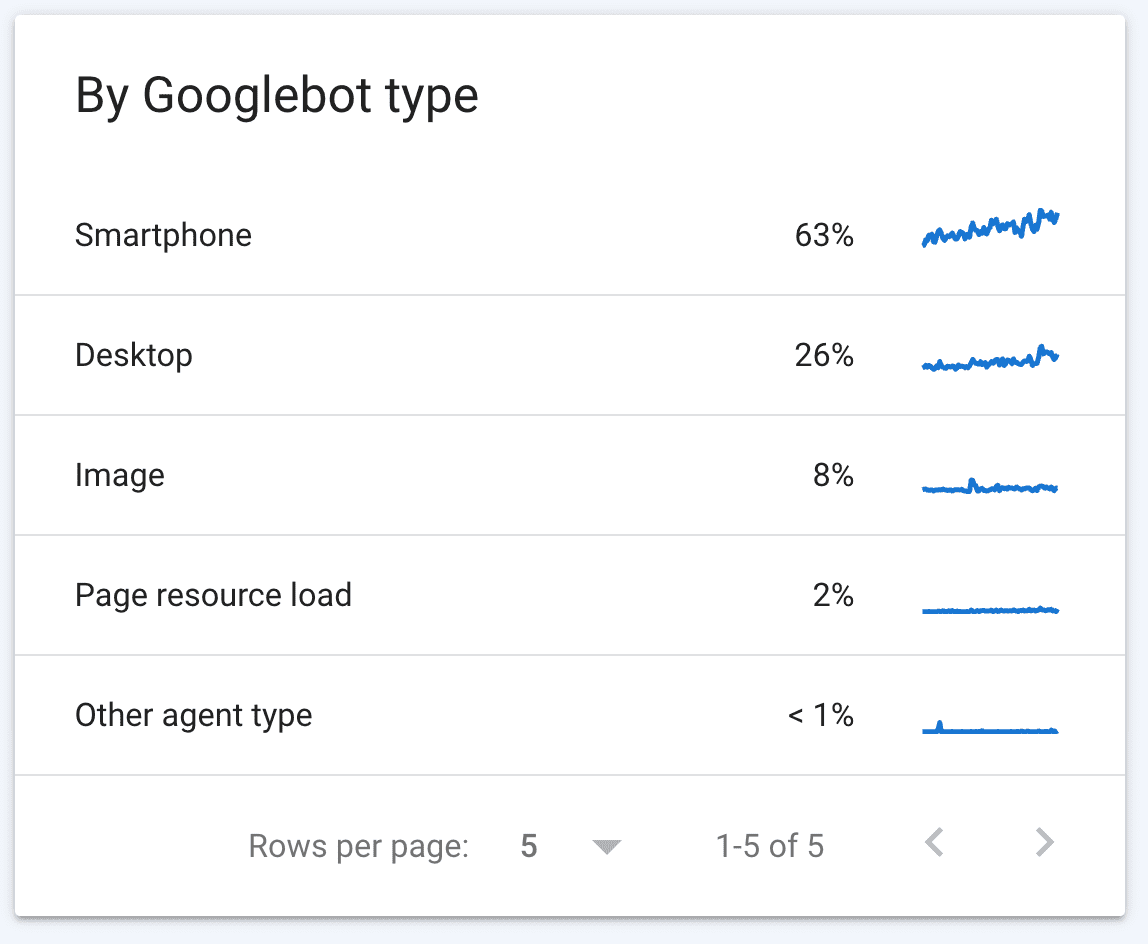In a major milestone for the digital landscape, Google has officially completed its transition to mobile-first indexing. This shift signifies Google’s commitment to prioritizing mobile versions of websites during the process of crawling and indexing content.
Making the announcement, John Mueller, Search Advocate, and Nir Kalush, Search Console, wrote,
“It’s been a long road, getting from there to here. We’re delighted to announce that the trek to Mobile First Indexing is now complete.”
Indeed, after years of preparation, this transition is set to redefine the way websites are ranked and accessed by the search engine giant.
Highlights:
- Google’s strategic shift to mobile-first indexing signals a shift in how websites are crawled and ranked.
- The shift emphasizes Google’s desire to provide a more accurate and user-centric experience for mobile internet users.
- To reflect the mobile-first indexing norm, Google has removed indexing crawler data from Search Console.
The Era of Mobile-First Indexing

The journey toward mobile-first indexing commenced in 2015, when Google introduced a substantial update to its search algorithm. This update was aimed at favoring websites that were considered “mobile-friendly.” It signified Google’s recognition of the increasing dominance of mobile devices in the online landscape.
In 2016, Google took the next significant stride in this transformative journey by embracing mobile-first indexing. Instead of focusing on crawling desktop pages, Google pivoted to prioritize the crawling of mobile pages. This strategic shift aligned the company’s operations with the rapidly evolving digital landscape, marking a pivotal moment in the history of online search and content accessibility.
A Celebratory Announcement
To mark this significant milestone, Google released an announcement expressing gratitude to all those who contributed to the success of the mobile web. The statement read:
“Over the years, mobile web traffic has continued to grow; in some regions, people almost exclusively use their phone to access the internet. Thank you – site owners, SEOs, web developers, designers, and everyone who works on websites – for helping to make the mobile web a success!”
This celebration underlines the collaborative efforts of website owners and professionals who have embraced the mobile-first approach, making it a reality.
Enhancing User Experience
As mobile usage surpasses desktop usage globally, Google’s transition to mobile-first indexing becomes a natural progression. Crawling mobile versions of websites offers a more precise and user-centric experience for individuals accessing the internet via their smartphones. This shift acknowledges the changing preferences of users and the need to align search results with their habits.
Websites have been gradually adapting to this evolution by ensuring that their mobile pages are as feature-rich and engaging as their desktop counterparts. This transformation goes beyond mere compatibility; it aims to provide an optimized and seamless user experience, catering to the growing population of mobile internet users.
Addressing Desktop-Only Sites
While most websites have successfully adapted to mobile-first indexing, there are still a few stragglers in the transition. Some websites are designed in a way that makes them more suitable for desktops, and these sites still require desktop crawling.
However, Google has made it clear that these sites are in the minority, and the company’s future vision is to further reduce the crawling of desktop pages. The emphasis is on delivering the best user experience on mobile, as that is where the majority of users are.
Changes to Search Console
In sync with the finalization of the transition to mobile-first indexing, Google has introduced alterations to its Search Console, a tool commonly utilized by webmasters. One significant change is the removal of indexing crawler data, which was once a valuable resource for webmasters.
This data removal reflects the shift towards mobile-first indexing as the prevailing norm. With most operational websites now predominantly crawled via mobile, the necessity for separate indexing data for desktop usage has significantly dwindled. This change signifies Google’s commitment to streamlining its services and tools in alignment with the evolving digital landscape.

Recommended: The Ultimate Guide to Product Page SEO with Rank Math (A Step-by-Step Guide)
Embracing the Mobile Revolution
The shift to mobile-first indexing is a testament to the growing significance of mobile devices in the realm of internet usage worldwide. With this transition now fully realized, Google has unequivocally embraced mobile as the primary platform through which users access the web.
This transformation signifies a new era in the digital world, where mobile optimization and user experience take center stage. As the mobile landscape continues to evolve, businesses and website owners must adapt to remain visible and accessible to their audience. The completion of Google’s switch to mobile-first indexing serves as a pivotal moment in this ongoing digital revolution.
Conclusion
Google’s transition to mobile-first indexing is a clear manifestation of the company’s dedication to staying in step with the dynamic evolution of the digital realm. As mobile devices continue to assert their dominance in the realm of internet usage, this transition has become nothing short of a necessity.
Google’s celebration of this momentous transition serves as a testament to the collaborative efforts of website owners, SEO experts, web developers, and designers, who have all played pivotal roles in shaping the success of the mobile web. It underscores the ever-evolving nature of the digital landscape, where adaptability and user experience are paramount.
In this new era, where mobile accessibility is key, Google’s mobile-first indexing ensures that the digital world remains user-centric, responsive, and adaptable to the ever-changing needs and habits of its vast online audience. This transition marks a significant milestone in the ongoing digital revolution, where mobile optimization is at the forefront of creating a seamless and engaging online experience for users worldwide.
FAQs on Google’s Mobile-First Indexing
-
What is mobile-first indexing?
Mobile-first indexing is a system used by search engines like Google to prioritize the mobile versions of websites when crawling and indexing content. This means that the mobile version of a website is given more importance in search engine rankings.
-
Why has Google transitioned to mobile-first indexing?
Google has transitioned to mobile-first indexing to adapt to the increasing prevalence of mobile devices for internet access. This ensures that the search results are more reflective of the user experience on mobile devices.
-
Are there websites that will still use desktop indexing?
Yes, a small number of websites may continue to use desktop indexing if their mobile versions do not perform optimally. However, Google plans to reduce the crawling of desktop pages for resource optimization.
-
How does mobile-first indexing affect website owners and developers?
Website owners and developers need to ensure that their mobile versions are well optimized and provide an excellent user experience to benefit from mobile-first indexing and maintain their search engine rankings.
-
What should businesses do to adapt to mobile-first indexing?
To adapt to mobile-first indexing, businesses should prioritize mobile optimization, ensure their websites are mobile-friendly, and focus on delivering a seamless user experience on mobile devices.


